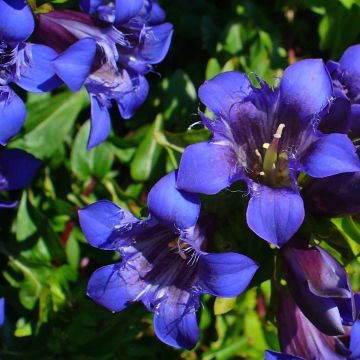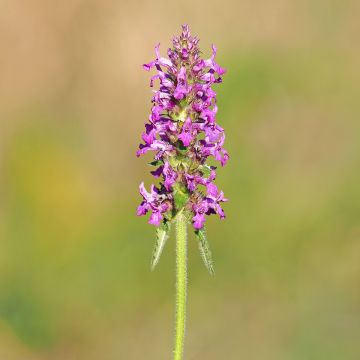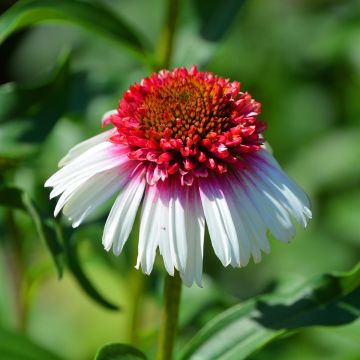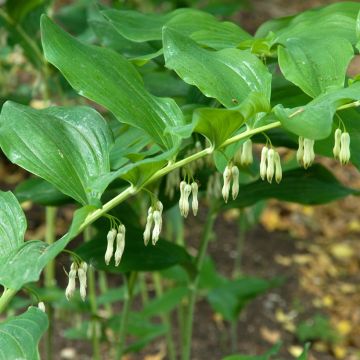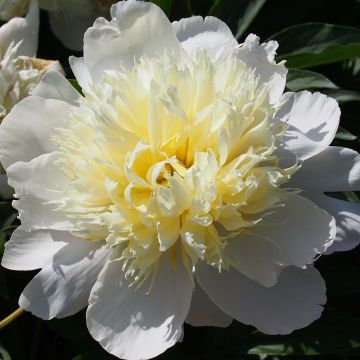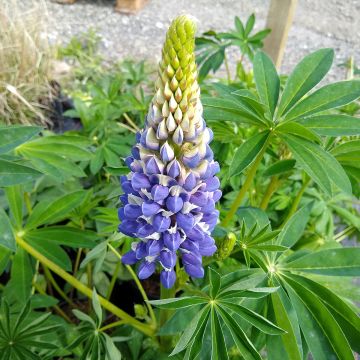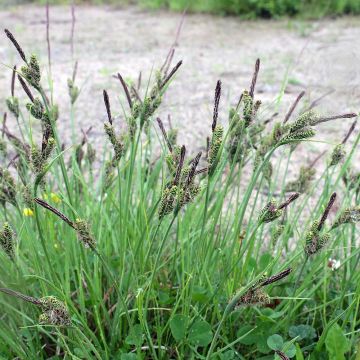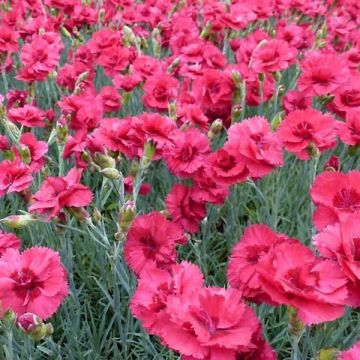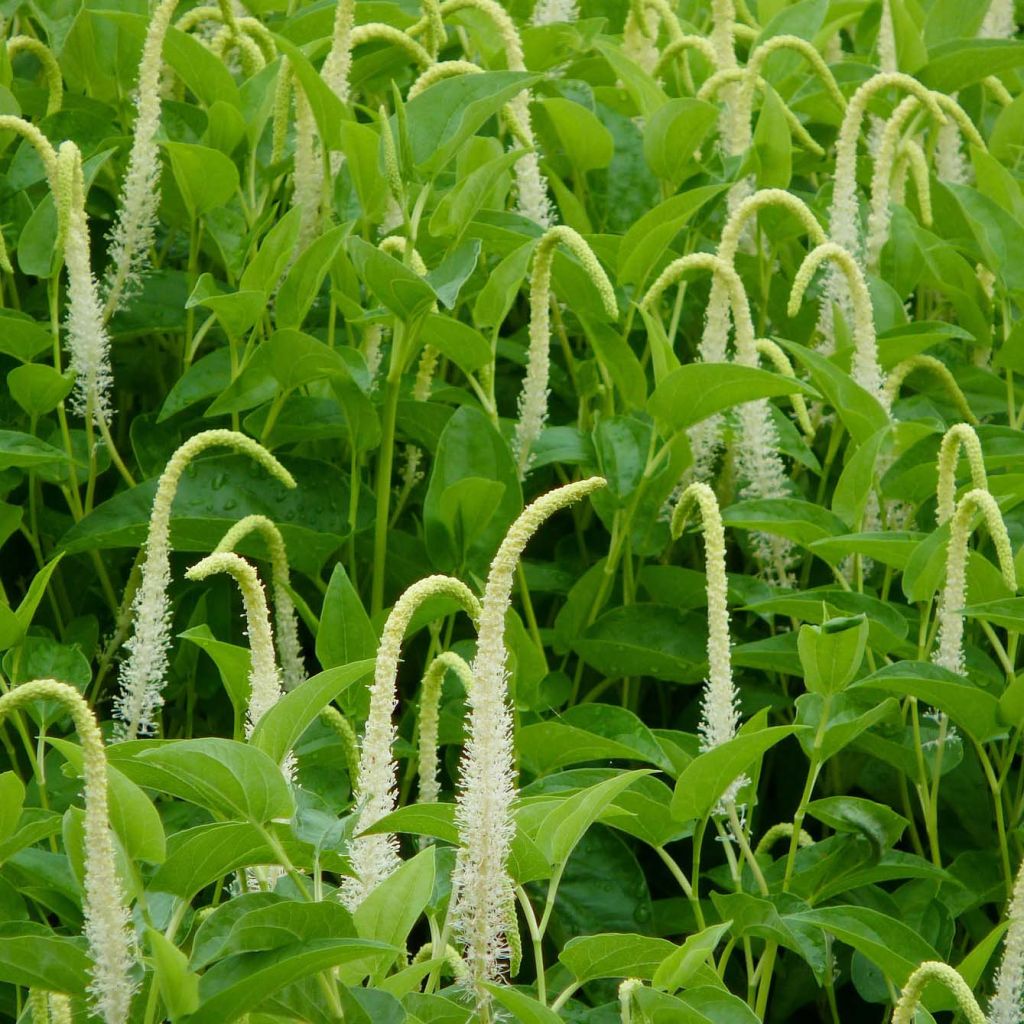

Saururus cernuus
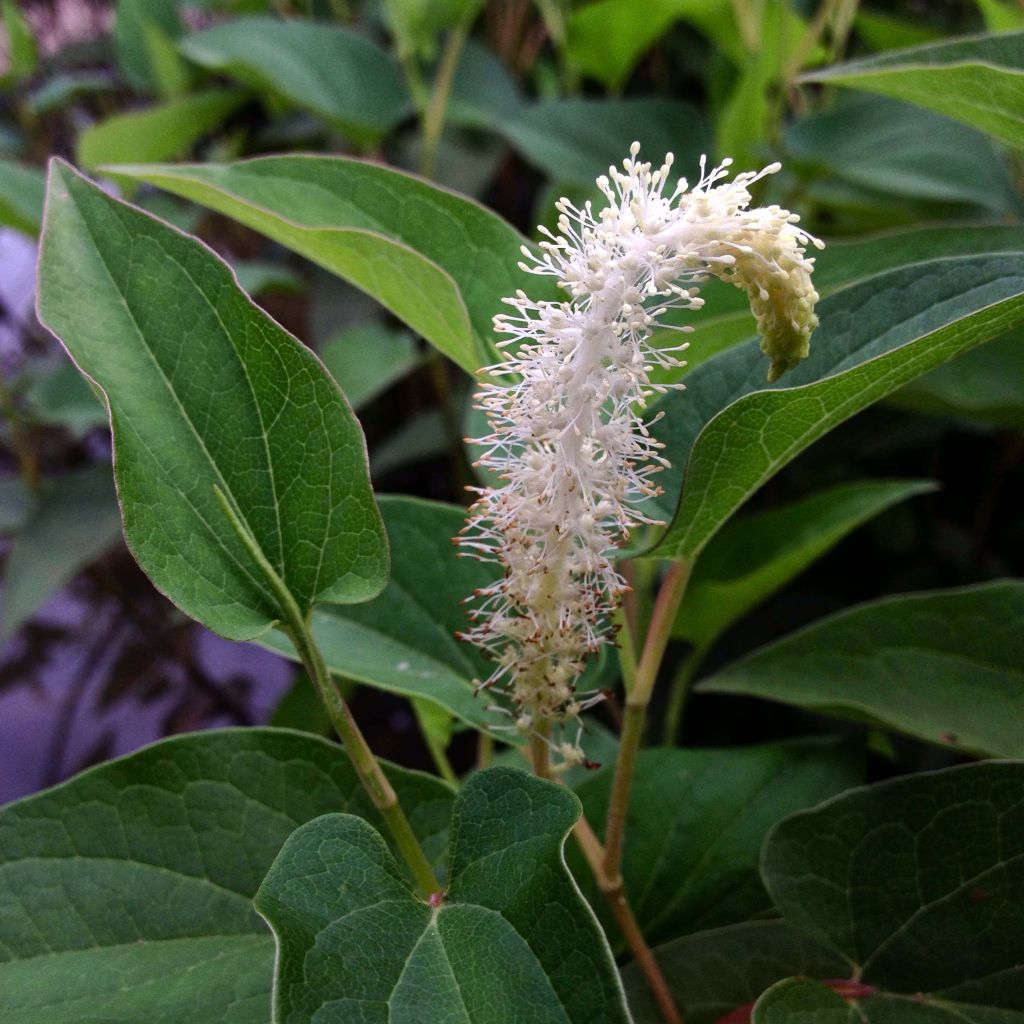

Saururus cernuus
Saururus cernuus
Saururus cernuus
Swamp Lily, Lizard's Tail, Water Dragon
Ordered in February. In May, still no shoot, no sign of a young plant, and I can't feel any rootstock in the pot.
Delphine, 06/05/2023
This item cannot be shipped to the selected country
Delivery charge from €5.90
More information
Schedule delivery date,
and select date in basket
This plant carries a 12 months recovery warranty
More information
We guarantee the quality of our plants for a full growing cycle, and will replace at our expense any plant that fails to recover under normal climatic and planting conditions.
From €5.90 for pickup delivery and €6.90 for home delivery
Express home delivery from €8.90.
Does this plant fit my garden?
Set up your Plantfit profile →
Description
Saururus cernuus, also known as swamp lily, is an aquatic perennial with rhizomes that grows in flooded and shaded banks. It is sometimes called lizard's tail due to its curious flowering spikes. It blooms throughout summer, raising long creamy-white and delicately scented inflorescences above its foliage. Bees adore these flowers. It forms an upright, compact, and spreading clump, with heart-shaped green leaves that have a paler underside. Vigorous and hardy, it is an excellent pond plant, both ornamental and highly sought-after for its purifying properties.
Saururus cernuus is a perennial plant in the Saururaceae family, related to houttuynia and anemopsis. It is a semi-aquatic plant native to the northeastern United States and Canada. This amazing plant spreads through robust and deeply anchored underground rhizomes. Eventually, it can reach a height of 30 to 60cm (12 to 24in) and form large colonies that can cover several square metres. Highly floriferous, it produces numerous fluffy inflorescences from July to September. These inflorescences, on average 20cm (8in) long, resemble swollen-based and tapered-tipped spikes, inclined towards the ground, and composed of tiny cream-white flowers with protruding stamens. The flowering leads to the formation of tiny berries containing a single small seed. In early spring, this perennial offers the unusual sight of its countless young shoots emerging from the ground, resembling lizard tails, intertwining with each other, each carrying a young ace of spades-shaped leaf at its tip. Over the course of days, the pinkish stems straighten up, and numerous leaves unfold, emitting a pleasant acidic fragrance. The mature leaves are lanceolate to cordate in shape, green on the upper side and paler to whitish on the underside.
It is an excellent plant for submerged to marshy areas in cool climates, which will easily establish itself on banks or in the mud of water bodies, under a maximum of 30cm (12in) of water. This amazing perennial has interesting purifying properties in large ponds, while offering unique and fragrant flowers. Thanks to its fairly rapid growth and spreading ability, it can be used as a large ground cover, alongside Nuphar lutea or water hyacinths. This perennial appreciates bright partial shade, rich and heavy soils, even clayey ones. When planting, it is important to consider that its powerful roots can damage pond liners.
Report an error about the product description
Saururus cernuus in pictures
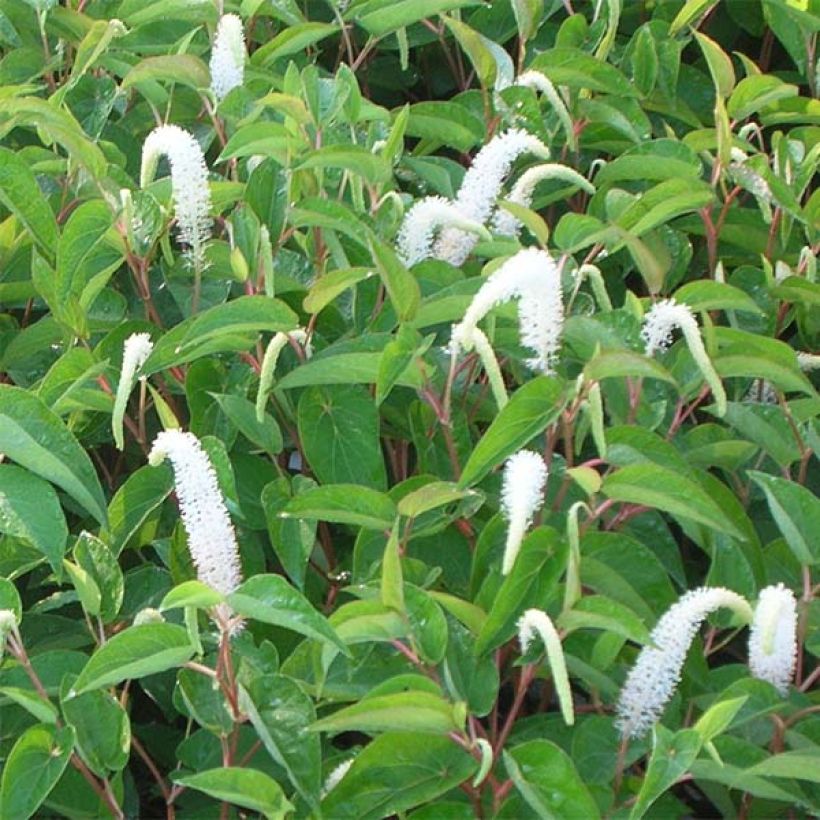

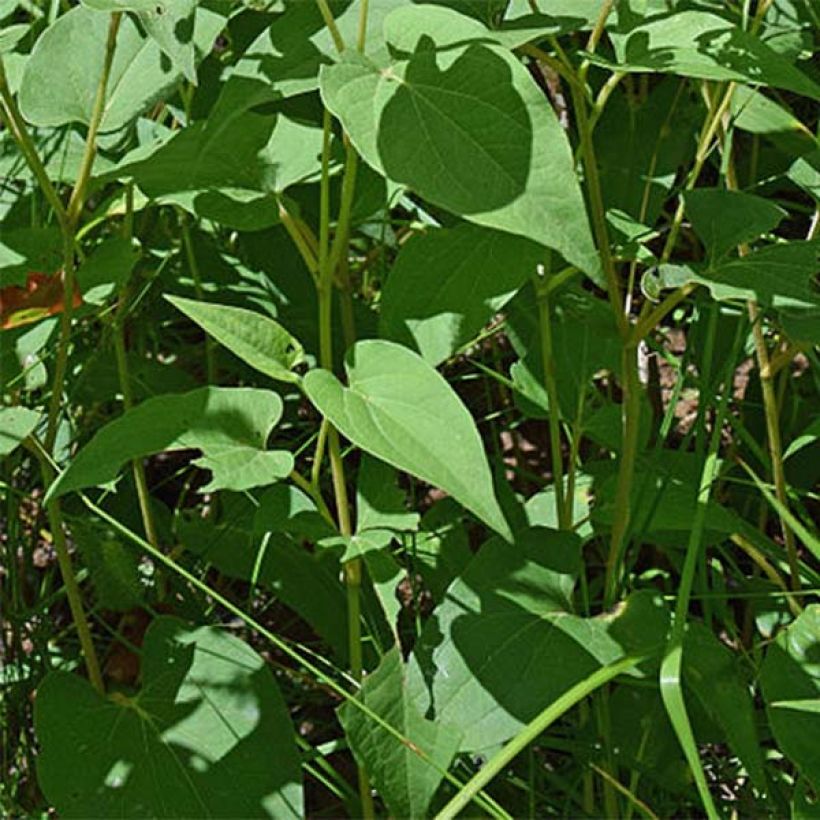

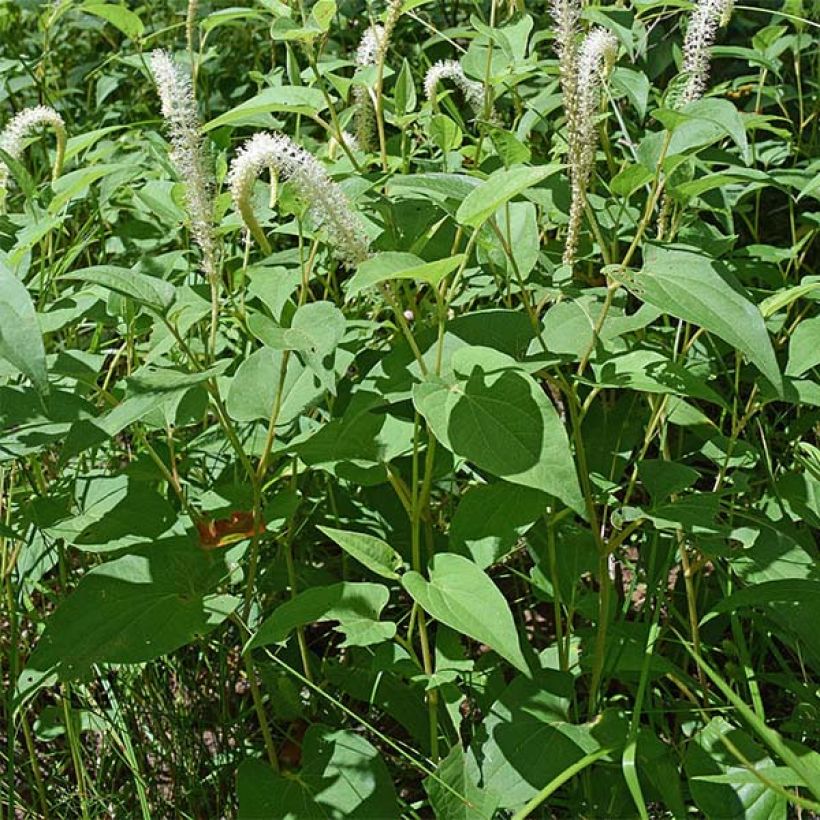

Flowering
Foliage
Plant habit
Botanical data
Saururus
cernuus
Saururaceae
Swamp Lily, Lizard's Tail, Water Dragon
North America
Other Perennials A to Z
Planting and care
Saururus cernuus prefers partial shade and waters with a temperature not exceeding 27°C (80.6°F). Its growth is quite rapid. Plant it in spring or summer, in soil that is flooded or marshy, or directly in the pond mud, under a maximum of 30cm (12in) of water. This plant thrives in sandy or loamy substrates, as well as in clayey and heavy soils. Care must be taken with its powerful and deep roots, which can damage pond liners. Remove dried stems if necessary, and practice pruning to limit its expansion if needed. Hardy and purifying, it is an excellent perennial, also very useful for stabilising shaded banks.
Planting period
Intended location
Care
-
, onOrder confirmed
Reply from on Promesse de fleurs
Summer flowering perennials
Haven't found what you were looking for?
Hardiness is the lowest winter temperature a plant can endure without suffering serious damage or even dying. However, hardiness is affected by location (a sheltered area, such as a patio), protection (winter cover) and soil type (hardiness is improved by well-drained soil).

Photo Sharing Terms & Conditions
In order to encourage gardeners to interact and share their experiences, Promesse de fleurs offers various media enabling content to be uploaded onto its Site - in particular via the ‘Photo sharing’ module.
The User agrees to refrain from:
- Posting any content that is illegal, prejudicial, insulting, racist, inciteful to hatred, revisionist, contrary to public decency, that infringes on privacy or on the privacy rights of third parties, in particular the publicity rights of persons and goods, intellectual property rights, or the right to privacy.
- Submitting content on behalf of a third party;
- Impersonate the identity of a third party and/or publish any personal information about a third party;
In general, the User undertakes to refrain from any unethical behaviour.
All Content (in particular text, comments, files, images, photos, videos, creative works, etc.), which may be subject to property or intellectual property rights, image or other private rights, shall remain the property of the User, subject to the limited rights granted by the terms of the licence granted by Promesse de fleurs as stated below. Users are at liberty to publish or not to publish such Content on the Site, notably via the ‘Photo Sharing’ facility, and accept that this Content shall be made public and freely accessible, notably on the Internet.
Users further acknowledge, undertake to have ,and guarantee that they hold all necessary rights and permissions to publish such material on the Site, in particular with regard to the legislation in force pertaining to any privacy, property, intellectual property, image, or contractual rights, or rights of any other nature. By publishing such Content on the Site, Users acknowledge accepting full liability as publishers of the Content within the meaning of the law, and grant Promesse de fleurs, free of charge, an inclusive, worldwide licence for the said Content for the entire duration of its publication, including all reproduction, representation, up/downloading, displaying, performing, transmission, and storage rights.
Users also grant permission for their name to be linked to the Content and accept that this link may not always be made available.
By engaging in posting material, Users consent to their Content becoming automatically accessible on the Internet, in particular on other sites and/or blogs and/or web pages of the Promesse de fleurs site, including in particular social pages and the Promesse de fleurs catalogue.
Users may secure the removal of entrusted content free of charge by issuing a simple request via our contact form.
The flowering period indicated on our website applies to countries and regions located in USDA zone 8 (France, the United Kingdom, Ireland, the Netherlands, etc.)
It will vary according to where you live:
- In zones 9 to 10 (Italy, Spain, Greece, etc.), flowering will occur about 2 to 4 weeks earlier.
- In zones 6 to 7 (Germany, Poland, Slovenia, and lower mountainous regions), flowering will be delayed by 2 to 3 weeks.
- In zone 5 (Central Europe, Scandinavia), blooming will be delayed by 3 to 5 weeks.
In temperate climates, pruning of spring-flowering shrubs (forsythia, spireas, etc.) should be done just after flowering.
Pruning of summer-flowering shrubs (Indian Lilac, Perovskia, etc.) can be done in winter or spring.
In cold regions as well as with frost-sensitive plants, avoid pruning too early when severe frosts may still occur.
The planting period indicated on our website applies to countries and regions located in USDA zone 8 (France, United Kingdom, Ireland, Netherlands).
It will vary according to where you live:
- In Mediterranean zones (Marseille, Madrid, Milan, etc.), autumn and winter are the best planting periods.
- In continental zones (Strasbourg, Munich, Vienna, etc.), delay planting by 2 to 3 weeks in spring and bring it forward by 2 to 4 weeks in autumn.
- In mountainous regions (the Alps, Pyrenees, Carpathians, etc.), it is best to plant in late spring (May-June) or late summer (August-September).
The harvesting period indicated on our website applies to countries and regions in USDA zone 8 (France, England, Ireland, the Netherlands).
In colder areas (Scandinavia, Poland, Austria...) fruit and vegetable harvests are likely to be delayed by 3-4 weeks.
In warmer areas (Italy, Spain, Greece, etc.), harvesting will probably take place earlier, depending on weather conditions.
The sowing periods indicated on our website apply to countries and regions within USDA Zone 8 (France, UK, Ireland, Netherlands).
In colder areas (Scandinavia, Poland, Austria...), delay any outdoor sowing by 3-4 weeks, or sow under glass.
In warmer climes (Italy, Spain, Greece, etc.), bring outdoor sowing forward by a few weeks.


































